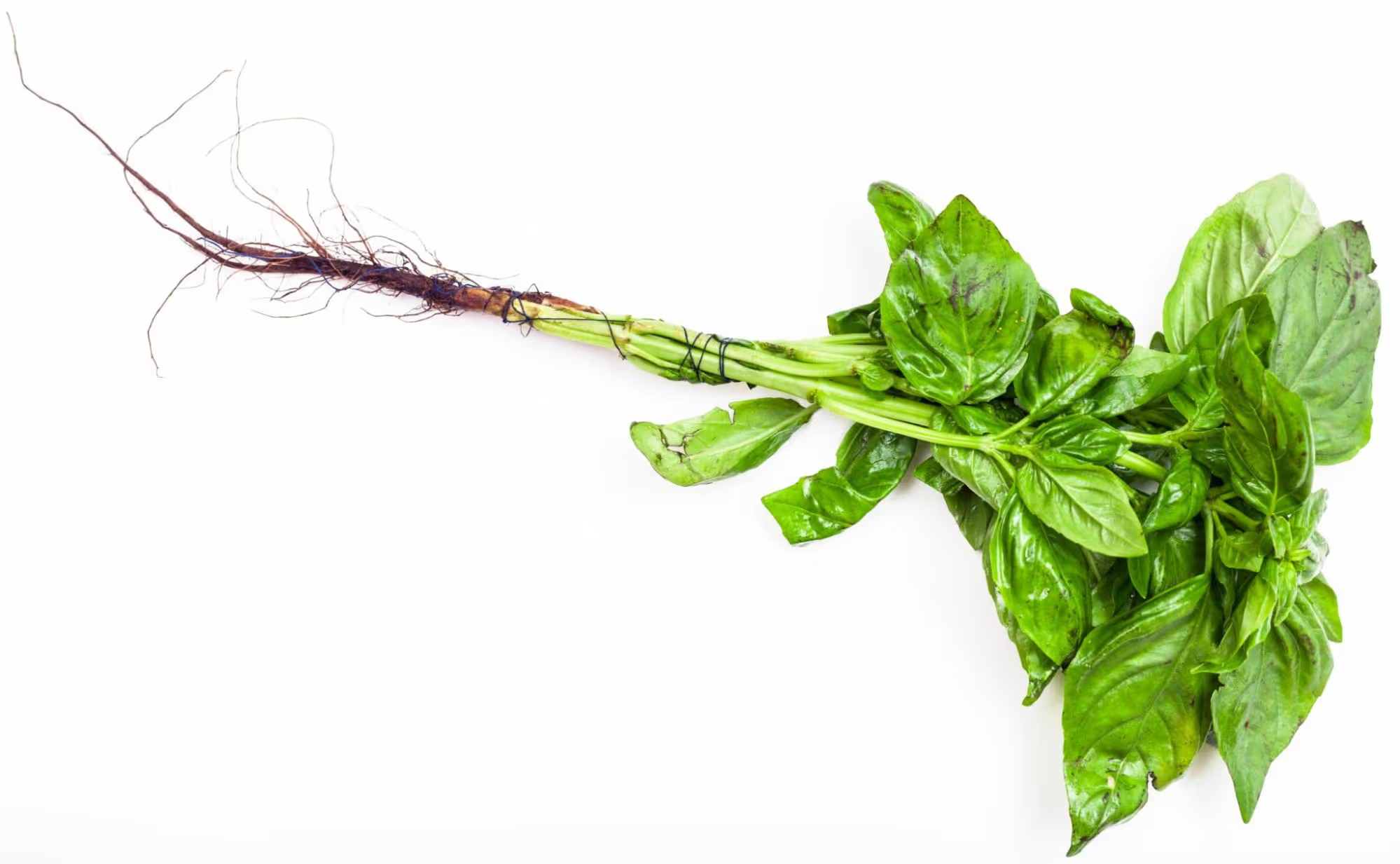A healthy root system is critical for the optimal growth, fertility, and overall health of basil. The roots are responsible for absorbing water, nutrients, and minerals from the soil, as well as stabilizing the plant. Without a strong root system, the plant would not be able to develop properly or withstand external stressors like drought, poor weather conditions, or pest attacks. The roots play a vital role in providing the necessary resources for the plant, making it important to identify signs of both healthy and problematic roots. Weak, damaged, or diseased roots can affect the overall development of the plant, impacting the size, quality, and quantity of leaves and fruit.
Root Color
The color of the roots can provide valuable insight into the plant's health:
- Light white roots are a sign of healthy, young roots that are functioning well. These roots actively absorb water and nutrients, indicating that the plant is likely to thrive and produce well.
- Yellow or brown roots suggest potential issues, such as overwatering, poor drainage, or early stages of root rot. These roots are less effective at absorbing nutrients and may slow the plant’s growth.
- Black roots indicate a serious problem, such as fungal infection or rot, and require immediate intervention, as these roots can no longer perform their function.
Root Length and Shape
The length and shape of the roots are indicators of the health and efficiency of the root system.
- Spread-out and branched roots suggest a healthy root system. Healthy roots are long, branched, and spread through the soil in all directions. This system allows the plant to effectively absorb water and nutrients. Basil roots typically do not grow too deep, but spread out in the upper layers of the soil, which makes it important for the soil to be loose.
- Short, dry, or damaged roots point to poor growing conditions, such as issues with watering, drainage, or root crowding in the pot. These roots are unable to provide sufficient nutrients to the plant, which can lead to slow growth and weaker development.
How to Care for Basil’s Roots
Proper care of basil’s roots is essential for maintaining plant health. To ensure the roots remain strong and healthy, several basic guidelines should be followed:
- Proper watering – Basil does not tolerate overwatering. If the soil remains constantly wet, root rot may occur. It’s recommended to water the plant when the top layer of soil is dry, but not overly dry. The soil should be moist, but well-drained.
- Well-drained soil – Basil prefers fertile, but well-drained soil. In heavy, waterlogged conditions, roots can rot. Adding compost or perlite to the soil can improve its quality and allow the roots to breathe.
- Proper shading – Too much direct sunlight can quickly dry out the soil and stress the root system. While basil prefers sunny locations, it should be protected from excessive sun, especially during the hottest parts of the day.
- Regular pruning – Pruning unnecessary, damaged, or old branches encourages the plant to direct its energy toward healthier growth. This can also promote better root development, as the plant redirects its energy to the healthy parts.
- Repotting – If the roots begin to overcrowd the pot and no longer have space to expand, repot the plant into a larger container. This will allow the roots to spread out freely and provide more space for growth.
- Watch for pests – Pests, such as root aphids, can severely damage the root system and slow the plant’s growth. Regularly check the root system for pests and, if detected, the plant should be treated with appropriate pesticides or natural remedies.
Root System Care for Healthy and Abundant Growth
Proper root care is essential for healthy basil growth, fertility, and resistance to stress. Regular monitoring of root color, length, and condition, along with adherence to basic principles of watering, drainage, and pruning, ensures the plant’s optimal development. Providing the right conditions for the root system, along with preventive pest control, helps basil grow strong and fruitful.
